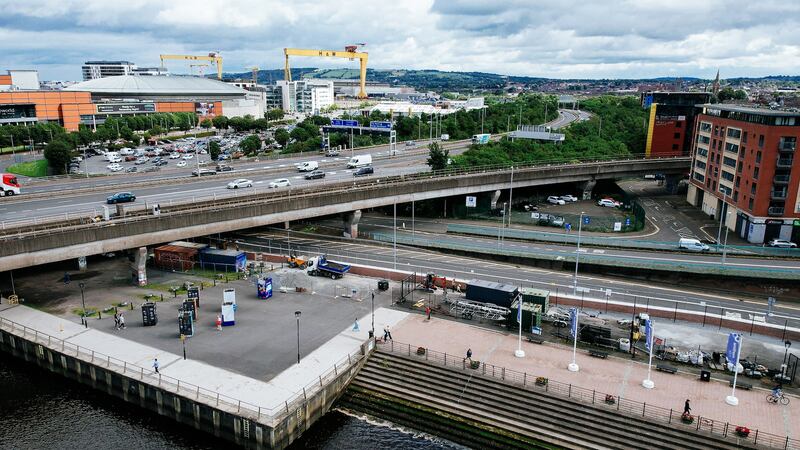The cost of a major flood defence scheme along the River Lagan in Belfast has almost doubled to £33 million.
A £17m contract for the Belfast Tidal Flood Alleviation Scheme was originally awarded to Charles Brand in 2021.
The company, which is part of the Lagan Specialist Contracting Group, has been carrying out the work since 2022.
But a combination of inflation and changes made to the positioning of flood defences on third party land, has resulted in the cost of the project rising to £32.8m.
It’s unclear how the Department for Infrastructure (DfI) plan to meet the extra cost.
The Stormont department was contacted for comment, but no response was forthcoming at the time of publication.
An update to the government tender published online this week confirmed the contract had been “modified due to unforeseen circumstances”.
It cites the impact of “hyperinflation on construction materials” and the change in the law restricting the use of red diesel in construction projects since April 2022.
It also lists change in defence wall construction type, design changes and “landowner driven reinstatement changes”.
It said Charles Brand also faced “numerous unrecorded utility intervention requirements and delays by existing utility companies in moving services”.
The scheme also required stop logs at Clarendon Dock.
The entire project involves 8.6km of one metre flood defences installed from Belfast Lough to Stranmillis Weir, including concrete walls, glass walls and removable barriers.
It was developed to address to the increased risk of flooding in Belfast associated with climate change.
The Department for Infrastructure (DfI) said 1,500 homes and businesses at risk in the city were at risk from “a significant tidal event”.
But rising sea levels due to climate change could increase that to 3,900 properties by 2080 and 7,300 by 2117.
DfI said the Belfast Tidal Flood Alleviation Scheme has been designed to provide a high level of protection up to the mid-2080s, with the option of adaptions potentially extending that by another 40 years.
The scheme was originally designed across 2017 and 2018 and formally approved by the Department of Finance in January 2019.
A tender process was launched in August of 2019, but was put on hold in December 2020 due to a legal challenge.
The process was restarted a full year later, with the Lagan Specialist Contracting Group selected in September 2021.
The scheme controversially involved the felling of trees in early 2022, with construction finally commencing at Lockview in July 2022.


